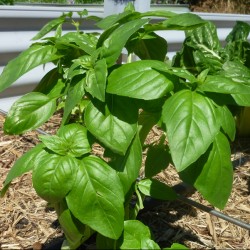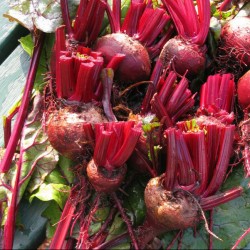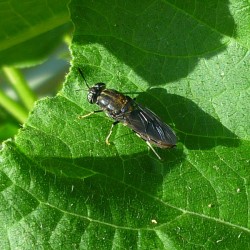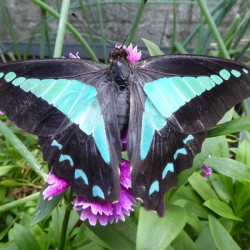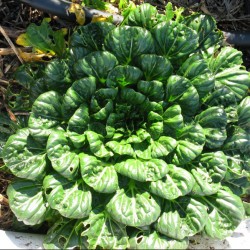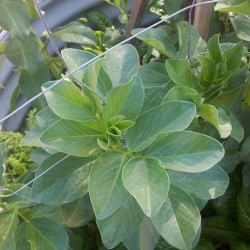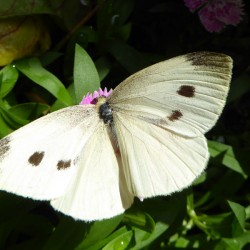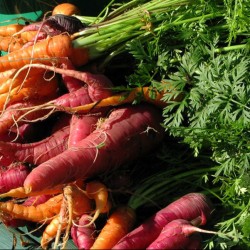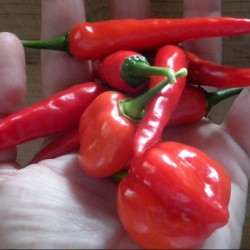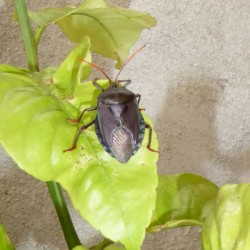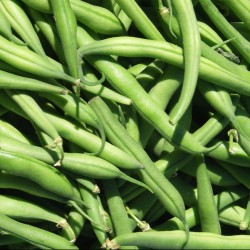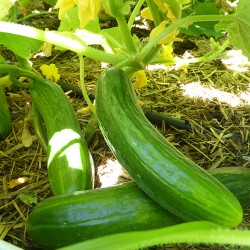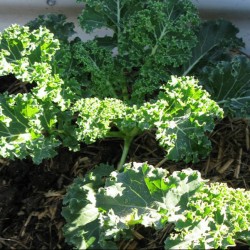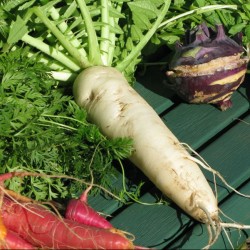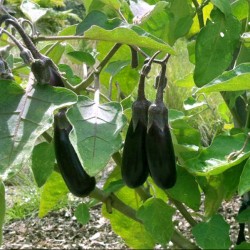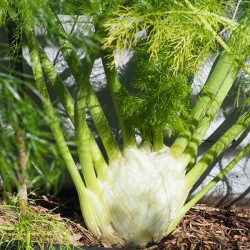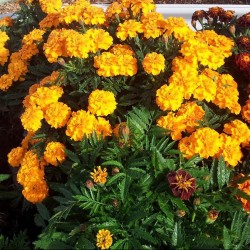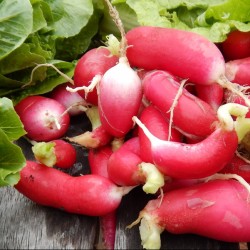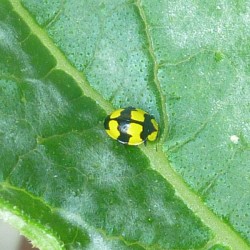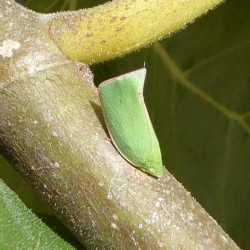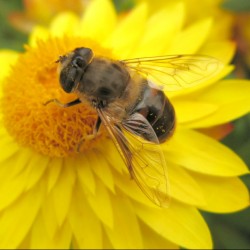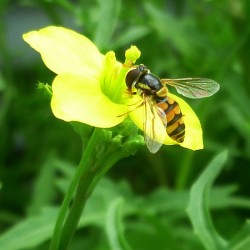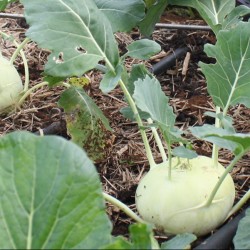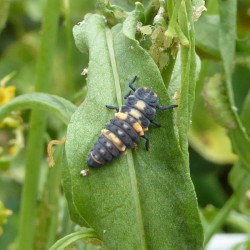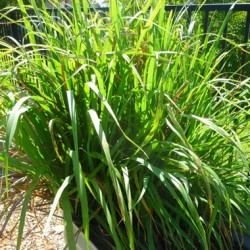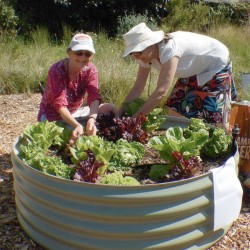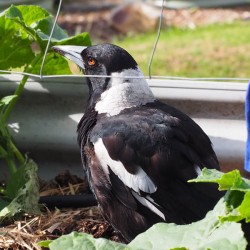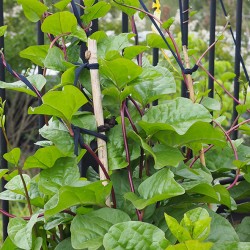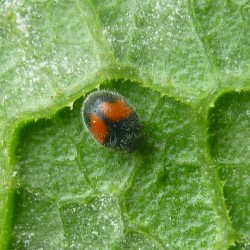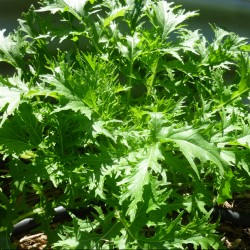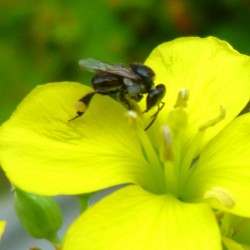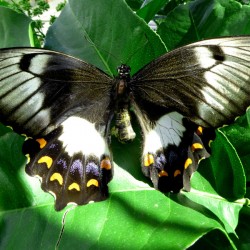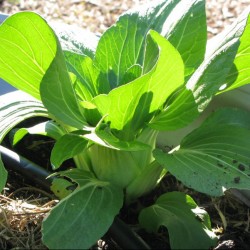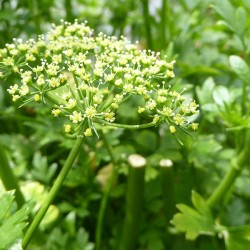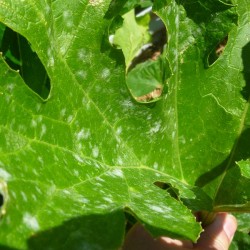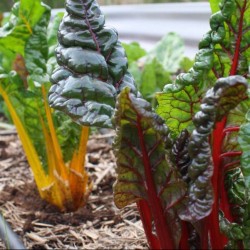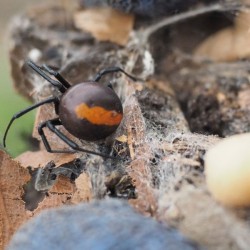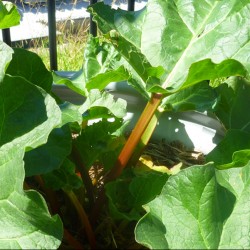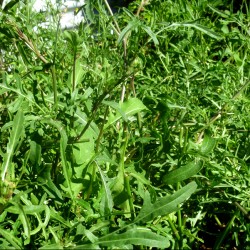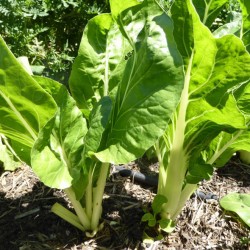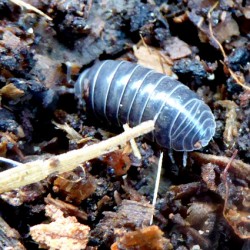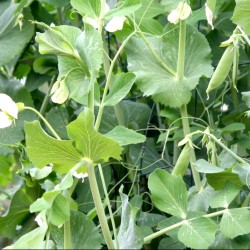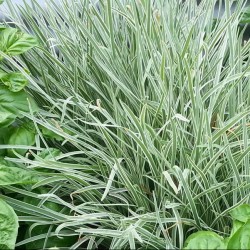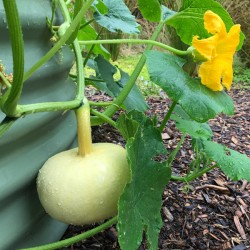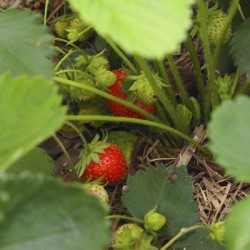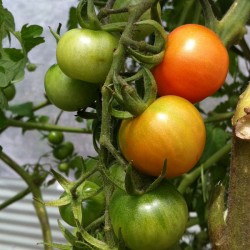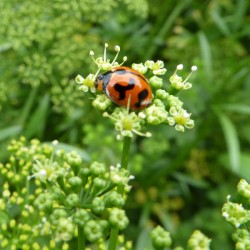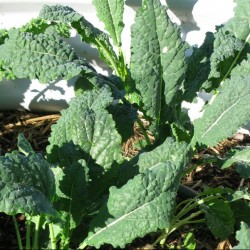Aphids

Aphids are soft skinned sap-sucking insects. They are tiny animals about 2 to 8 mm long. Aphids come in a range of colours: green, black and brown, whitish and light red. Other names are black-fly and green-fly.
Most aphids species specialise on particular host plants. They are a serious and if not contained devastating pest. Aphids proliferate quickly because they can reproduce non-sexually.
Most aphids don’t move easily on their own. They can travel wide distances with the wind, very few species develop wings if the place they occupy gets too crowded.
Aphids usually live in a symbiotic relationship with ants. The ants protect the aphids against predators and carry them to new ‘grazing grounds’. The aphids supply the ants with a sweet honeydew that they excrete.
Aphids are a concern because they:
- suck plant sap, which weakens the plant and leads to yellow, mottled, curled and wilted leaves and plant death
- they transmit plant viruses
- excrete a sweet honeydew that sticks to the plants and is a perfect breading ground for fungi like sooty mould
Predatory wasps and the larvae of lacewings, ladybirds, hoverflies, and some blues (butterflies) prey on aphids.
Basil
Botanical name: Ocimum basilicum Description: Basil is a herb in the mint family. It shows a flower fused out of 5 petals and showing an upper and a lower lip, typical for this family. Basil grows best as an annual plant. It has green leaves placed in pairs growing opposite each other on a slightly [more]
Beetroot
Botanical name: Beta vulgaris Description: Beetroots are actually the same plant as the silverbeet and the rainbow chard. Farmers selectively bred cultivars with big, tender swollen taproots, which is the actual vegetable. They grow about 40 cm high. The leaves are egg-shaped or oblong and show colourful veins. While most cultivars have red beets, there [more]
Black soldier fly
Black soldier flies are slender flies about 18 mm long and 5 wide with a dark black body and transparent wings, usually folded together on their backs. The flies are fairly slow moving, often not even trying to escape. They mimic the appearance of wasps to scare off predators but can’t sting or bite. The [more]
Black Spanish radish
Botanical name: Raphanus sativus, var niger Description: Radishes are quick growing annual or biennial plants native to Asia, but can now be found worldwide. The black Spanish radish is grown for it’s swollen globular up to 10 cm in diameter tap roots. The skin colour of the root is black, but the flesh is white. [more]
Blue triangle
Blue triangles, also called common bluebottles, are swallowtail butterflies native to eastern Australia and southeastern Asia. They are very quick and skillful fliers and reach a wingspan of 8 cm. The butterfly itself feeds on nectar, its caterpillar specialises on the leaves of Australian native trees and doesn’t affect any of the crops in our garden. [more]
Bok choi
Botanical name: Brassica rapa, one of several Chinensis cultivars of this species Description: Bok choi is one of the Asian greens, a type of Chinese cabbage. This quick growing cabbage doesn’t build a firm head but a flattish rosette of dark green leaves, 5 cm high and about 20 cm in diameter. The leaves are [more]
Broad Beans
Botanical name: Vicia fava Description: Broad beans or fava beans are part of the legume family. The inedible pods of broad beans are thick and spongy, containing 2 to 7 large, flat, bright green tender beans. The plant builds 2 to 4 stems that grow up to 180 cm high. It shows white flowers with [more]
Budworm moth
Budworms are caterpillars of the Helicoverpa moth family. The moths lay their eggs at night on young foliage close to fruits or flower buds and the young caterpillars feed on the foliage first before moving into buds or developing fruits. Budworm moths choose several fruits for their young ones, in our garden they are a [more]
Cabbage butterfly
This 5 cm large butterfly is a common sight in the garden. It has white wings with black tips and dots. There are several species of cabbage butterfly that look and behave very similar. Other names of those butterflies are large white butterfly or small white or simply white butterfly depending on the species. The [more]
Carrots
Botanical name: Daucus Carota subs. sativus Description: There is evidence of carrots been a vegetable already 5000 years ago in what is today’s Afghanistan. The original cultivated plant had a purple root, orange varieties first appeared in Europe in the 1700’s. The 20 to 30 cm long roots range from orange, yellow, purple to white [more]
Chili
Botanical name: Capsicum annuum; Capsicum chinense; Capsicum frutescens Description: There are several genus of chilies. Most chilies, like Thai chilies, jalapenos and long chilies are part of the genus ‘annuum’, which also features the capsicums. The genus ‘frutescens’ has very colourful, small fruits from white over yellow to green, red and purple; tabasco peppers and [more]
Choi sum
Botanical name: Brassica rapa var. parachinensis Description: Choi sum is one of the Asian greens, a type of Chinese cabbage. This quick growing cabbage doesn’t build a firm head but long slender crunchy stems with oblong green leaves. The stems are 2 cm wide and up to 30 cm long. The leaves are up to [more]
Climbing Beans
Botanical name: Phaseolus vulgaris Description: Climbing beans are the immature 10 to 15 cm long seed pods of the common bean. They are part of the legume family. There is a wide range of cultivars of climbing beans with pods coloured green, yellow (wax beans), purple, red or streaked. There are thin beans (harricots) and [more]
Cucumbers
Botanical name: Cucumis sativus Description: Cucumbers are members of the gourd family. The plant has tendrils and is a climbing vine. The leaves are palmate and up to 40 cm wide. The stems of the plant are hollow and ridged and fruit show a prickly surface. The flowers are yellow and up to 15 [more]
Curly kale
Botanical name: Brassica oleracea var. sabellica Description: Curly kale is a plant in the cabbage family that produces oblong shaped leaves instead of a head. The leaves are green or purple in colour, about 30 cm long and have a curly rim. Some kale varieties can grow more than a meter in height, the plants [more]
Daikon radish
Botanical name: Raphanus sativus, var longipinnatus Description: Radishes are quick growing annual or biennial plants native to Asia, but can now be found worldwide. The daikon radish is grown for it’s swollen long tap roots, up to 40 cm long and 10 cm in diameter. The skin colour of the root is white, as is [more]
English spinach
Botanical name: Spinacia oleracea Description: Spinach grows about 30 cm tall. It shows green oval to rhombic, curly or smooth leaves up to 30 cm long 15 cm wide. The leaves (including the stems) are the vegetable. Spinach doesn’t like acidic soil and needs soil temperatures not to be higher than 25 C. It is [more]
Fennel
Botanical name: Foeniculum vulgare dulce Description: The fennel cultivar that produces a swollen, bulb like stem at the bottom is often called Florence fennel as opposed to it’s herb like sibling the bronze fennel that is cultivated as a decorative plant. Both are cultivars of the wild fennel plant that originates in the Mediterranean and [more]
French radish
Botanical name: Raphanus sativus Description: Radishes are quick growing annual or biennial plants native to Asia, but can now be found worldwide. French radishes are grown for their swollen long or globular tap roots, up to 10 cm long and 2 cm in diameter. The skin colour of the root is white or red, the [more]
Fungus eating ladybird
The fungus eating ladybird does as it’s name says: it feeds on fungi. It’s not actually looking for mushrooms – mould and mildew are what the little beetle is after. This native Australian ladybird is about 5 mm long and shows bright yellow dots that look square-ish and somehow frayed. Its larvae is about 10 [more]
Green plant hopper
About 15 mm small and shaped like a bright green triangle green plant hoppers are very well disguised as a leaf. Most often you will only realise they are around when they hop long distances to escape after being disturbed. A member of the bug family they are a pest sucking on the plant’s sap. [more]
Honey bee
Honey bees are important pollinators in our garden. While foraging for nectar and pollen they also distribute pollen from one flower to another. By doing this they make sure that our plants get fertilised and can set fruit. To attract honey bees to our garden we offer them a variety of flowering plants, that we [more]
Hover-fly
Hover-flies look like little wasps. They have a yellow and brown striped back and transparent wings. This mimicry helps them to scare off predators. Despite their looks hover-flies are harmless to humans, they are a real fly. The feature that lends them the name is their peculiar flight behavior. They hover in the air at [more]
Kohlrabi
Botanical name: Brassica oleracea var. gongylodes Description: Kohlrabi is closely related to broccoli. It is grown for it’s bulbous, swollen stem which comes in a light green and a purple variety. The kohlrabi bulb reaches about 10 cm in diameter. The leaves grow directly from the bulbous stem and are up to 40 cm long. [more]
Ladybird larva
Just shy of 1 cm long and a couple of millimeters wide this little hunter certainly looks like a little alien. Don’t worry, it doesn’t do any harm to humans, neither does it harm any plant. It does mean business though when it comes to its favorite food: aphids, scale insects and mealybugs. Ladybird larvae [more]
Lemongrass
Botanical name: Cymbopogon citratus Description: Lemon grass is a herbal shrub and a member of the true grass family, it is related to sugar cane and corn. It origins in south India and South East Asia and grows as a perennial in areas with no frost. Lemongrass grows thick stems up to 2 cm in [more]
Lettuce
Botanical name: Lactuca sativa Description: Lettuce plants and their ancestors are native to Europe and Northern Asia. They are usually grown for their colourful green and red leaves that grow 15 to 30 cm high. They have been cultivated to a variety of colours, textures (soft and tender to crisp and crunchy) and shapes (dense [more]
Magpie
Members of our resident flock of magpies are a common sight in our garden. Adults and young birds can be seen walking around on the ground inspecting our beds. With their piebald plumage they are easy to identify. One of the most accomplished Australian songbirds they entertain us with their beautiful calls, sometimes even mimicking [more]
Malabar spinach
Botanical name: Basella rubra Description: Herbaceous semi succulent perennial plant with vines up to 10 m long. The stems are red and soft. The leaves are heart-shaped. Reported to be high in calcium, iron, soluble fibre and vitamins A and C. The whole plant is edible. How to grow: The plant is actually a perennial, [more]
Minute two-spotted ladybird
This shy little beetle is just 3 mm big and a native to eastern and southern Australia. It will drop or fly away quickly if disturbed. If we think of beetles the picture of a ladybird is very often the first thing that comes into our mind. The minute two-spotted ladybird doesn’t really match this [more]
Mizuna
Botanical name: Brassica rapa subsp. nipposinica Description: Mizuna is Japanese mustard green that looks a bit like wild rocket. There are lots of different varieties of Mizuna. They all offer 10 to 20 cm long, deeply serrated and feathered leaves, that are about 5 cm wide. The leaves are the vegetable and have a crisp [more]
Native bee
Native bees are important pollinators in our garden. While foraging for nectar and pollen they also distribute pollen from one flower to another. By doing this they make sure that our plants get fertilised and can set fruit. To attract native bees to our garden we offer them a variety of flowering plants, that we [more]
Orchard swallowtail
Who says that pests have to be ugly? The adult stage of this animal is a beautiful butterfly. Indigenous to eastern Australia and PNG these butterflies have a wingspan of up to 14 cm. They are mostly black and white with red, orange and blue patterns on their back wings. The larvae is a [more]
Pak choi
Botanical name: Brassica rapa, one of several Chinensis cultivars of this species Description: Pak choi is one of the Asian greens, a type of Chinese cabbage. This quick growing cabbage builds a very loose head with long green leaves and succulent white stems. The stems and leaves are the vegetable and are about 30 cm [more]
Parsley
Botanical name: Petroselinum crispum Description: Parsley is a herbaceous plant in the umbel family. The plant shows dark green leaves that branch into three 1 to 3 cm big leaflets. Italian parsley grows about 40 cm high, curly parsley up to 25 cm, they are both cultivars of the same plant. Parsley is native to [more]
Powdery mildew
Powdery mildew is the name of a variety of fungi, that affect the leaves of plants. They are present everywhere in the environment and are brought in by wind, birds and insects. Powdery mildew loves warm humid nights and dry, warm and shady areas of the garden. Really wet conditions and constant very high or [more]
Rainbow chard
Botanical name: Beta vulgaris, var. cicla Description: Rainbow chard is actually the same plant as the beetroot and the silverbeet. Farmers selectively bred more leafy cultivars with smaller to none bulbs and thicker stems. They grow about 50 cm high. The leaves show an intense green, have colourful yellow, red or orange veins and are [more]
Red back spider
Take care when reaching for items in the garden that haven’t been disturbed for a while, look out for animals that may hide there. Shake out gloves before using them but always wear gloves when gardening. Warm dry places are very attractive to red back spiders. Their favourite prey, insects and slaters, is available in abundance [more]
Rocket
Botanical name: Eruca sativa is the garden rocket and Diplotaxis tenuifolia is the wild rocket Description: There are two varieties of rocket. The garden rocket with lobed leaves and white flowers and the wild rocket with deeply serrated leaves and yellow flowers. Both have deep green leaves with a spicy, nutty flavour, the later variety [more]
Silverbeet
Botanical name: Beta vulgaris, var. cicla Description: Silverbeet, also known as Swiss chard is actually the same plant as the beetroot and the rainbow chard. Farmers selectively bred more leafy cultivars with smaller to no bulbs and thicker stems. They grow about 50 cm high. The leaves show an intense green, have white veins and [more]
Snow and Snap Peas
Botanical name: Pisum sativum var. saccharatum (Snow pea), Pisum sativum var. macrocarpon (Snap pea) Description: Both snow peas and sugar snaps are cultivars of the podded pea. They are members of the legume family. The sugar snap offer a more rounded 4 cm pod, the snow pea a 6 cm flat pod. If the pods [more]
Sprouting broccoli
Botanical name: Brassica oleracea var. italica, calabrese Description: Sprouting broccoli is a variety of broccoli with smaller heads on a larger number of thinner stems than ordinary broccoli. The plant grows up to 80 cm high. It develops a strong main stem 5-8 cm in diameter with several branches. The dark green leaves are 20 [more]
Squash
Botanical name: Cucurbita pepo Description: Squash is a member of the gourd family. The plant has tendrils and is a climbing vine. The vines grow up to 15 meters long, they produce anchoring roots that only root down superficially. The leaves are palmate and up to 40 cm wide. The stems of the plant are [more]
Strawberries
Botanical name: Fragaria x ananassa Description: Strawberries (together with apples, roses, most stone-fruit and almonds) are a member of the rose family (rosaceae). Strawberry plants grow 20 to 30 cm high, show dark green serrated leaves and usually flowers with white petals, that look like tiny wild roses. The fruit is conically shaped, dark red, [more]
Sweet potato
Botanical name: Ipomoea batatas Description: Sweet potatoes one of the only two edible and non toxic plants in the morning glory family (the other one is water spinach). They are grown for their starchy root bulbs; the leaves and young shoots of some sweet potatoes are also used as a vegetable. They are not closely [more]
Tatsoi
Botanical name: Brassica rapa var. rosularis or Brassica narinosa Description: Tatsoi is one of the Asian greens, a type of Chinese cabbage. This quick growing cabbage doesn’t build a firm head. It forms a low growing rosette of small spoon shaped dark green leaves with short pale lime green stems. The leaves are the vegetable [more]
Tawny frogmouth
Frogmouths are nocturnal birds. They are often confused with owls but only distantly related. They are native Australian birds and can grow up to 50 cm tall. Frogmouths have an amazing way of disguise. On the day the birds sit on a tree motionless, the head usually held up high: it is hard to distinguish [more]
Tomato
Botanical name: Solanum lycopersicum Description: Tomatoes are part of the nightshade or solanaceaes family. Only the fruit of tomatoes are edible! Flowers, greens and shoots should not be consumed because they contain a toxin. There are varieties that grow like a bush and varieties that grow like vines. Tomato plants are vigorous growers. They produce [more]
Transverse ladybird
If we think of beetles the picture of a ladybird is very often the first thing that comes into our mind. The funny little red or orange beetles with black dots are frequent visitors to our gardens and usually people don’t mind them and find them rather cute. Some people find they bring luck. Some [more]
True grass family
Botanical name Poaceae Features of the plants in the family of true grasses Species we grow Sweet corn, lemongrass Other common plants in this family [more]
Tuscan kale
Botanical name: Brassica oleracea var. palmifolia Description: Tuscan kale is a plant in the cabbage family that produces oblong shaped leaves instead of a head. The leaves are dark bluish green in colour, about 40 cm long and have a bumpy surface. Tuscan kale plants grow about 80 cm high. Kale originates in Europe were [more]
